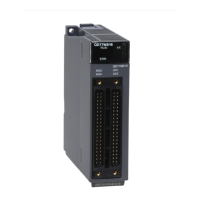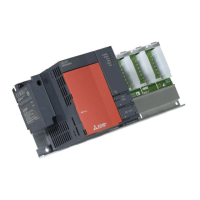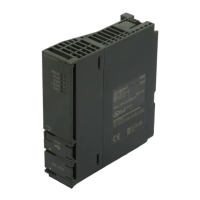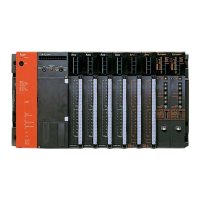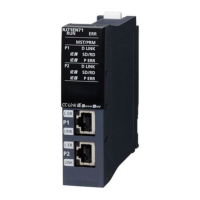2 INSTRUCTION TABLES
2.4 Basic Instructions
31
2
Floating
decimal
point data
comparisons
(single
precision)
LDE= • Conductive status when
(S1+1, S1) = (S2+1, S2)
• Non-Conductive status when
(S1+1, S1) (S2+1, S2)
3 Page 191
ANDE=
ORE=
LDE<> • Conductive status when
(S1+1, S1) (S2+1, S2)
• Non-Conductive status when
(S1+1, S1) = (S2+1, S2)
3
ANDE<>
ORE<>
LDE> • Conductive status when
(S1+1, S1) > (S2+1, S2)
• Non-Conductive status when
(S1+1, S1) (S2+1, S2)
3
ANDE>
ORE>
LDE<= • Conductive status when
(S1+1, S1) (S2+1, S2)
• Non-Conductive status when
(S1+1, S1) > (S2+1, S2)
3
ANDE<=
ORE<=
LDE< • Conductive status when
(S1+1, S1) < (S2+1, S2)
• Non-Conductive status when
(S1+1, S1) (S2+1, S2)
3
ANDE<
ORE<
LDE>= • Conductive status when
(S1+1, S1) (S2+1, S2)
• Non-Conductive status when
(S1+1, S1) < (S2+1, S2)
3
ANDE>=
ORE>=
Floating
point
comparisons
(single
precision)
ECMP • (D) is on when (S1, S1+1) >
(S2, S2+1)
• (D)+1 is on when (S1, S1+1)
= (S2, S2+1)
• (D)+2 is on when (S1, S1+1)
< (S2, S2+1)
4 Page 212
ECMPP
Floating
point band
comparisons
(single
precision)
EZCP • (D) is on when (S1, S1+1) >
(S3, S3+1)
• (D)+1 is on when (S1, S1+1)
(S3, S3+1) (S2, S2+1)
• (D)+2 is on when (S3, S3+1)
> (S2, S2+1)
5 Page 216
EZCPP
Category Instruction
symbol
Symbol Processing details Execution
condition
Number
of basic
steps
Subset Reference
ES1S2
ES1S2
ES1S2
ES1S2
E
S1 S2
ES1S2
ES1S2
ES1S2
ES1S2
ES1S2
ES1S2
ES1S2
ECMP DS1 S2

